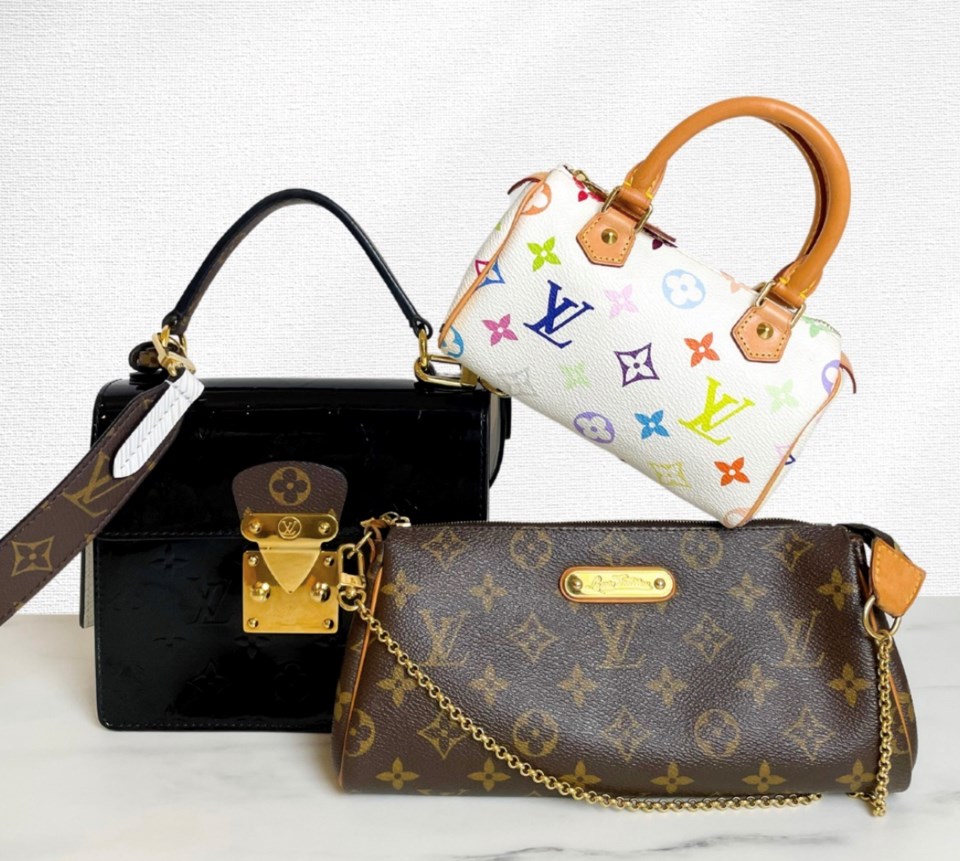Not so surprisingly, Â鶹´«Ã½Ó³»has just as many fake designer items as it does real items. But how can you tell them apart?
According to Courtney Watkins, founder of luxury consignment and resale store , it's getting harder and harder to spot fake items. The store's expert buyers come across several fake items per week.
The resale store puts each designer item they buy through an in-house authentication process, including third-party authentication technology to determine if the item is the real deal.
Watkins breaks the process down to a few necessary steps: checking the item's construction, a smell test and, for handbags, a third-party digital authentication.
The item's construction takes into account details like stitching, matching date and style codes, and fonts.
Stitching
"We'll look at the stitching [which] is usually a big one, making sure the stitching is perfectly straight, and looking at the two sides and making sure there are the same amount of stitches from one side to another."
Symmetry tends to be the easiest way to tell apart a fake designer item, especially uneven stitching, according to the expert.
Codes
"Certain bags will have a code," she says. "[We match] up serial codes and date codes and see if they make sense."
Watkins adds that doing a quick Google search for the code should bring up that exact item, and if it doesn't, then it's most likely not an authentic designer item.
Different handbags have different codes, according to the expert. For example, Chanel and Louis Vuitton have date codes while Gucci, Balenciaga and other bags have style codes. These codes are either attached to a leather tag or hidden in a pocket or next to a seam. "You've got to kind of hunt for them," says Watkins.
Fonts
Fonts and tags are also another way to tell if an item is fake. "Checking the fonts of a label and comparing it against something real, or looking at the quality of the tag," is another method, she says.
Smell test
After examining the construction and overall quality of the item, Mine & Yours authentication experts do a smell test. "Oftentimes fakes will be made out of fake leather or fake product– it won't be real leather. Sometimes fakes come in and they smell a bit toxic, like chemicals," Watkins explains.
Boxes and dust bags
Checking the item itself isn't all there is to the authentication process. Everything that the item comes with serves as clues to the item's authenticity, packaging included. Comparing the box to an authentic box, specifically the logos, and looking at the quality of dust bags are another way to spot a fake item. "The logo will be slightly off-centre, or angled and not perfect. Or you'll get a dust bag and it feels so thin and cheap and like it's going to crumble... The chances are, if it's not real then the item in it isn't either," Watkins explains.
Third-party authentication
For handbags, which are most commonly faked, Mine & Yours partners with third-party authentication companies Entrupy and Real Authentication which use technology to confirm authenticity. "Entrupy uses a microscopic camera and advanced AI technology to compare handbags to a massive database of known authentic and counterfeit items," says the resale store website.
Rule of thumb
Other commonly faked items are shoes and clothing with logos and trending items from the current or the previous season. For those who aren't familiar with designer items like Mine & Yours' expert buyers, Watkins says the best way to find out if an item is fake is by asking where the seller got the item from and asking for a receipt.
"If you're buying off of a person, don't be afraid to ask where they got [the item] from, or if they have a receipt," says Watkins, adding that a lot of designer stores and high-end stores like Holt Renfrew keep records on file, so in the case that the seller doesn't have a receipt, calling the store and asking for a receipt also an option.
"Do your due diligence, ask questions and use the internet," she advises. "Look at the quality, does it look like a $1,000 pair of shoes? Does it look like it was made well? Is the structure good? Use your phone and Google [the] style code, and see what it says. What does the tag look like? Just do a little bit of research."
Thrifting designer gems is possible
Despite numerous designer fakes scattered around the city, the chance of spotting an authentic designer item at a thrift store isn't slim. "There's a lot of wealthy people in Vancouver. Some people come and take their items to us, but some people just donate it," notes Watkins.
"Especially if [they] only have one or two designer items, [they] maybe think it's not worth their time to go [to us] so they take the one or two items to a store and just get rid of it all," she says.
If a casual thrift shopping trip yields a possible designer treasure, it may be worth taking a closer look.



